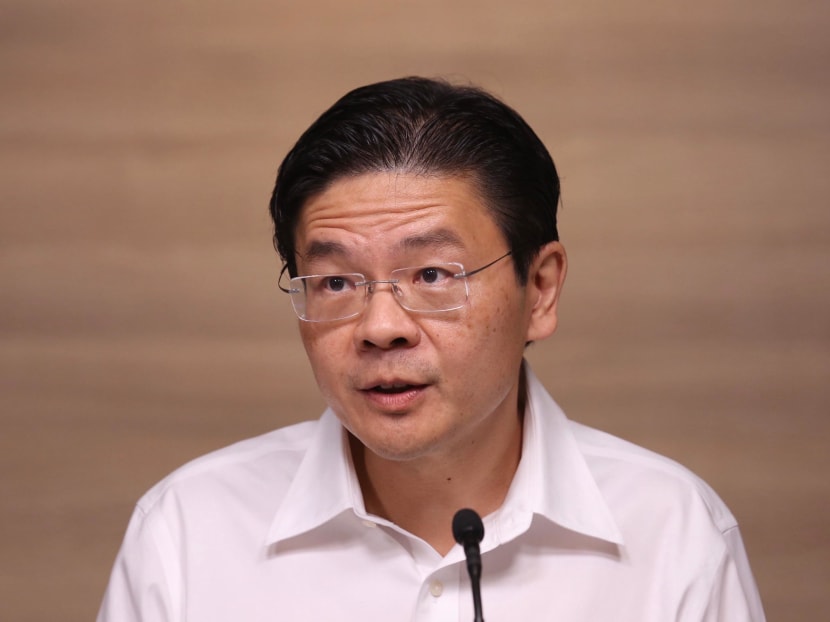Budget 2020: ‘Do not take our fiscal strength for granted’, says Lawrence Wong on long-term pressures on NIRC
SINGAPORE — Several Members of Parliament (MPs) on Friday (Feb 28) raised questions about the continued health of national investment returns, which are now the largest contributor to the Government’s coffers.

Second Minister for Finance Lawrence Wong said the Government is keeping watch of global trends that could stress a key component of the country’s revenue.
SINGAPORE — Several Members of Parliament (MPs) on Friday (Feb 28) raised questions about the continued health of national investment returns, which are now the largest contributor to the Government’s coffers.
Singapore’s net investment returns contributions (NIRC) for the 2020 financial year are expected to add around S$18.63 billion to the Budget, which is 9.3 per cent more than the S$17.05 billion from the NIRC in 2019.
This led some, including Holland-Bukit Timah Group Representation Constituency (GRC) MP Liang Eng Hwa, West Coast GRC MP Foo Mee Har, and Workers’ Party chief Pritam Singh, to question the sustainability of this sort of growth in NIRC, in the face of global pressures, the Covid-19 outbreak, and other headwinds.
The exchange took place following the debate into the Finance Ministry's (MOF) budget.
In his responses, Second Minister for Finance Lawrence Wong said the Government is also concerned about the long-term returns and is keeping watch of global trends that could stress a key component of the country’s revenue.
As such, Singapore must remain vigilant and not assume that NIRC will keep pace with its spending needs, and “not take its current fiscal strength for granted”, said Mr Wong.
WHAT IS NIRC?
The NIRC comprises 50 per cent of the returns from investments by sovereign wealth fund GIC, Singapore investment company Temasek Holdings and the nation’s central bank, the Monetary Authority of Singapore (MAS), as well as 50 per cent of the dividends, interest and other income received from investing Singapore’s national reserves.
The projected S$18.6 billion in NIRC for fiscal year 2020 will contribute more to the Government’s revenues this year than corporate tax (S$17.1 billion), personal income tax (S$12.5 billion), and Goods and Services Tax (S$11.3 billion).
NIRC allows Singapore to supplement annual government spending in a sustained manner.
This means Singapore is one of a few countries which do not need to service their debts and other liabilities from their budgets on an annual basis. The other nations with similar abilities to use investment income for public spending are typically those with substantial reserves of natural resources such as oil, according to the MOF’s website.
LONG-TERM PRESSURES ON NIRC
Notwithstanding the Covid-19 outbreak, there are also long-term global pressures and the persistent near-zero interest rate environment, noted Mr Liang, who chairs the Government Parliamentary Committee for Finance and Trade and Industry.
Mr Wong, who is also Minister for National Development, said there are reasons to be “watchful” over the capacity of the NIRC to maintain expected returns over the longer term:
Geopolitical tensions between America and China will likely be a long-term issue as they will continue to tussle for power for “quite a while”, potentially leading to a bifurcated world over time.
There could be more nationalist and protectionist pressures around the world, which would slow the pace of globalisation. This would cause global growth to be lower for longer periods.
Developed markets are beset by ageing populations, lower productivity and stagnating growth, which will put pressure on the long-term expected returns of Singapore’s investment entities.
The NIRC will continue to be an important source of revenue over the long term, he said.
HOW IS THE RATE OF RETURNS DETERMINED?
The NIRC is not linked to short-term performance and is thus not affected by “immediate market volatilities”. It looks at the long-term expected returns of Singapore’s investment entities.
This means that even when stock markets everywhere crash and overall returns are negative, the NIRC is not affected much. Conversely, if it is a “bonanza” year and markets were to go up, the NIRC does not shift much either, said Mr Wong.
The rate of returns is evaluated yearly.
The investment entities — MAS, GIC and Temasek — will first go through a “very rigorous process” to determine the rate of return. Then, MOF will also review the rate.
It is finally submitted to the Council of Presidential Advisors and the President to approve the figures for the year.











